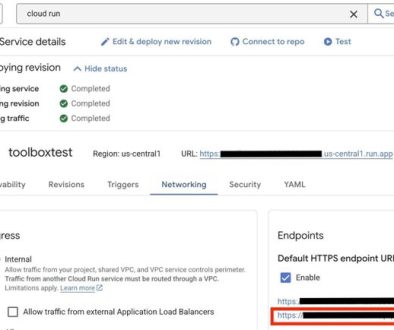GCP – Start-up The Drivers Cooperative steers community transport while experiencing 12x growth
Editor’s note: Today’s blog post comes from Erik Forman, The Drivers Cooperative co-Founder. Erik shares how The Drivers Cooperative supports a living wage for drivers in one of the most expensive cities in the U.S. to sustainably support paratransit passengers who are reliant on rides to get to their life-critical appointments using Google Maps Platform.
At The Drivers Cooperative, we’re building a different kind of mobility business. We’re driver-owned, and we custom-build technology that aligns the interests of all stakeholders–creating better outcomes for everyone. We created the first $30 per hour wage guarantee for drivers in the gig economy, we optimize to provide service excellence for riders with disabilities, and we provide support for owner-operator drivers to transition to electric vehicles.
Driver ownership means drivers make more on each trip, profits go back to drivers, and they have democratic control over the decisions that affect their lives. Our mission is to improve conditions for drivers in the for-hire vehicle industry through system change, by putting our members in the driver’s seat of the platform economy.
We’ve done things a little differently than most startups. Where many of our competitors started out trying to market to the most privileged consumers, we decided to serve people who have the least money and resources in the ride hail space and need mobility the most. We focus on paratransit (transportation for people with disabilities) and Medicaid-funded non-emergency medical transportation.
The Drivers Cooperative has experienced 12x growth thanks to our living wage guarantee and because of the technology we have been able to develop by using Google Maps Platform.
Improving the rider experience with more accurate traffic predictions
We shopped around for various mapping and routing providers, but ultimately chose Google Maps Platform because it’s the market leader. The traffic data is extensive, and the various solutions it provides are robust and scalable. And again, sustainability and social impact are important to us, just as it is to Google.
Paratransit riders use The Drivers Cooperative to book pre-scheduled rides directly in the app
Once we chose Google Maps Platform, we had to build our app from scratch. Rideshare apps can look deceptively simple, but that’s a sign of good design and engineering. On the backend, there are hundreds of thousands of lines of code that create a seamless experience for drivers and riders. And because we serve a unique population of riders, there are unique technology demands.
For example, many riders with disabilities use our company for pre-scheduled rides to their medical appointments or workplaces. Some of these appointments are life-critical, and they can’t arrive late. However, New York City traffic is unpredictable, making it harder to build routes that will get drivers to their pickups on time, drop off passengers on schedule, and use drivers’ time effectively, so they make more money.
We overcame that challenge with Fleet Routing, which was originally designed for delivery companies. The solution uses a powerful algorithm combined with extremely accurate traffic data to optimally allocate riders to drivers. We built a wrapper that creatively repurposes Cloud Fleet Routing to build high-quality routes for paratransit pickups and drop-offs in New York City, which has meant drivers can make more per hour because they’re able to work more efficiently.
When we had questions, we reached out to Google Premier Partner Woolpert, who advised us on the nuances of Google Maps Platform’s solutions. Google Maps Platform’s and Woolpert’s support was indispensable, and now I’m proud to say the Cloud Fleet Routing API has made dramatic differences in the lives of our riders and drivers. We use the Cloud Fleet Routing API to take all rides to be completed and match them with all available drivers to create the most efficient routes.
The Drivers Cooperative app walks users through the ride booking process
Before we used Fleet Routing, some riders used to end up on hour-long detours for trips that should take 30 minutes due to traffic-unaware routing. Now, we get our riders to an appointment or workplace that’s 30 minutes away in 30 minutes, saving emissions and getting riders picked up and dropped off reliably. And better routing means higher utilization rates for drivers–boosting driver hourly income.
Creating competitive parity for a startup company
We also work with the Metropolitan Transportation Authority to offer an on-demand service for paratransit riders. We custom-built a rider app that allows paratransit riders to book a trip on-demand.
For this service, we use Google Maps Platform’s Mobility services. This allows us to match riders with the closest driver by ETA, not just by geometric distance, and book trips back-to-back to optimize fleet utilization. Mobility services then enable real-time execution, providing visibility on where drivers are and sharing that with users. They also ensure drivers are provide with accurate locations for pickups and dropoffs.
By using Google Maps Platform, we’re able to invest more time and usability on the front end for riders with disabilities, because it provides parity on the back end with much larger ridehailing competitors. We’re a small company, but we have the same robust backend as many of the bigger players. We’ve generated more than $11 million in revenue and completed over 300,000 trips.
We’re proud that our little company has made life better for drivers who are now able to make a living wage in one of the most expensive cities in the U.S. And our service has made life easier for riders who can spend more time doing what they love, instead of waiting for a ride.
Expanding into new markets
Because of the success we’ve had partnering with the city of New York in offering community transportation services, governments from all over the world have reached out to us, asking for advice on how to revamp their own services. Some people think if a service is provided by the government, it must be bad, but we’re showing if the right partner is involved, that’s not true. You can creatively use technology to create a high-quality service for people who need mobility the most.
We built a service that works, so much so we want to scale it and make it available for all New Yorkers this year. We couldn’t have done all this without Google Maps Platform. It has allowed us, an underdog startup, to build a world-class service that we can’t wait to share with more of the world.
For more information on Google Maps Platform, visit our website.
Read More for the details.




